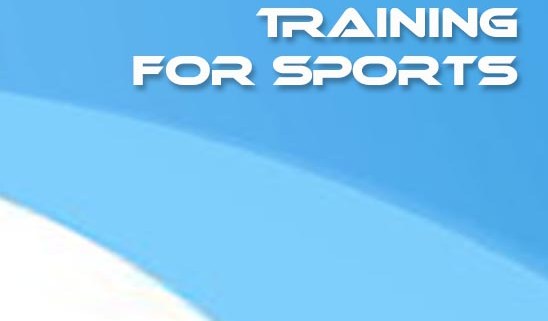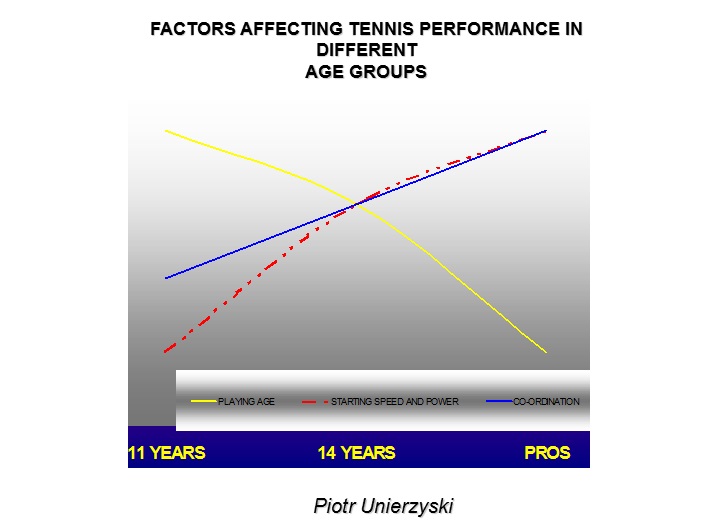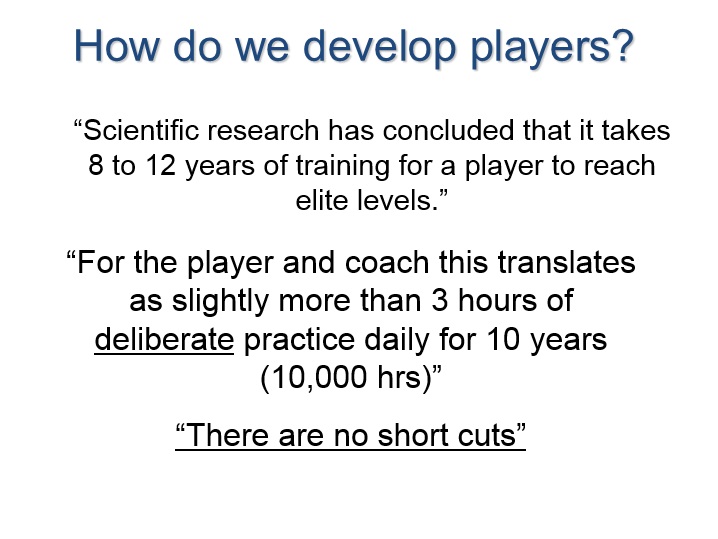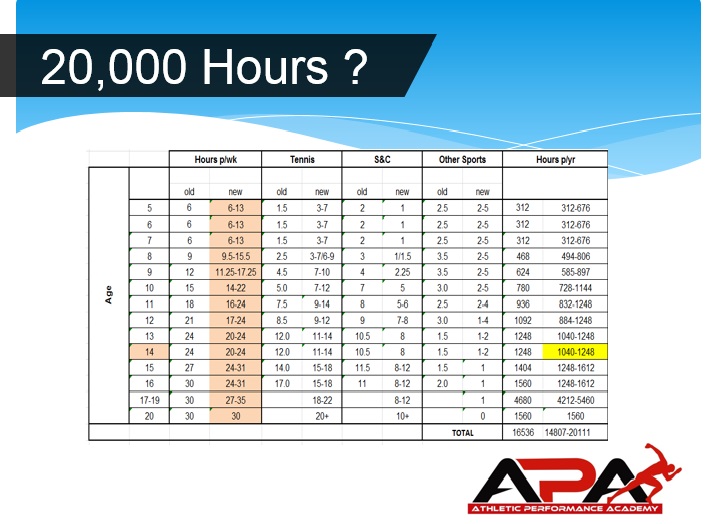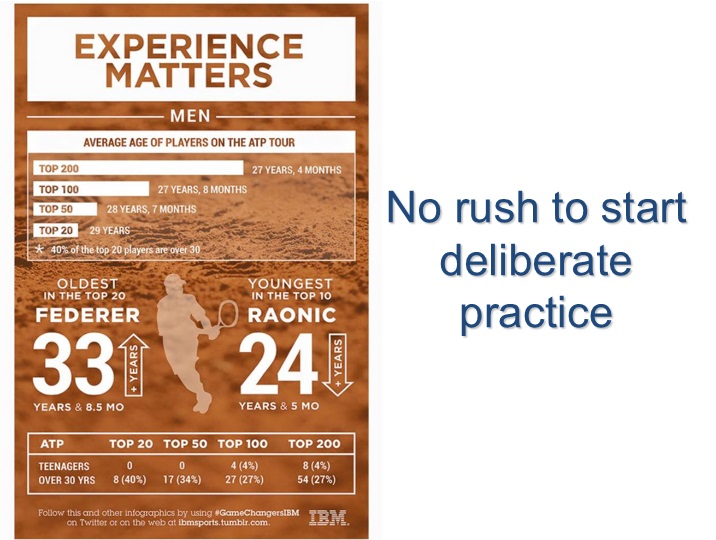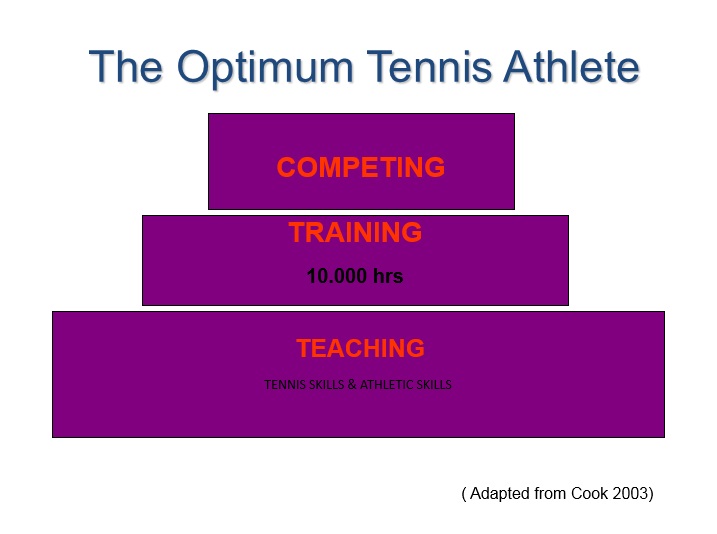Why movement skills must come before sports skills
It’s that time of year again where I’m doing more speaking engagements. This month I will be presenting at:
October 2015
- Herts Lawn Tennis Association: ‘The Role of S&C in Stroke Development’ 15th October 2015
- University of Hertfordshire ‘Foundations of Sports Coaching’ 27th October 2015
- University of Hertfordshire ‘Advanced Sports Coaching’ 30th October 2015
- APA Workshop Gosling Sports Park ‘Coordination and Strength Training for Sports.’ 31st October 2015
Key Themes
Coaching Process:
Across all four presentations I will be focusing on some key principles of the Coaching Process. This is based on:
- Creating a Culture
- Creating an Environment
- Communicating Effectively
The coaching process exists to provide a framework for ensuring successful performance.
Training Process:
In the sessions for Herts LTA and also in the APA workshop I will be focusing more closely how to ensure that physical gains made in the gym transfer into performance. To understand how to do this you need to know the ingredients that determine optimal performance. Before I continue I would encourage you to read a blog article of Keir Wenham-Flatt aka the rugby strength coach- click HERE , on training specificity. He makes some really good points on why at times the training we do in the gym can be very general in nature, as this is the best way to maximise the capacities of certain biomotor abilities. At other times it is important to train very specifically to enable you to apply your fitness under game conditions.
But seeing as many of my presentations will specifically address the needs of sports coaches I will be focusing on the cross-over between S&C and sports coaches when improving sport specific skills.
Anyone who has done coaching at any level will likely have been taught about the four performance factors:
- Mental
- Physical
- Tactical
- Technical
In my presentations I focus on the Mental and Physical factors and then go into detail on how the S&C can work in unison with the Technical requirements of the sports skill action to optimise performance.
Physical Factors: Long-term Athlete Development
No presentation on S&C would be complete without some reference to Long-term Athletic Development (LTAD). Below is a graph which I have found very useful over the years.
Get ready for the Demands of the Sport
I like to start with this slide in a lot of my presentations as it gives a context for the rest of the presentation. I make the point that yes, those young children who start the sport sooner and do more at a young age will be more successful at a young age. This is because Playing Age accounts for a lot of the success of a young athlete.
But over the course of the athlete’s career it is the Level of fitness (specifically speed and their coordination) that affects tennis performance to a much greater extent. Yet so many parents and coaches interpret this the wrong way. They think that because it takes on increasing importance over time you don’t need to address it until much later down the track. In fact the opposite is true, you need to invest in your fitness from a young age so that when you get to the higher levels you have the physical capacities to meet the ever increasing demands of the sport.
You can’t cram for the test! You only have to look at how much Andy Murray needed to invest in his fitness when he made the transition onto the ATP Tour and initially struggled in best of five Grand slam tournaments. Most players are not as well equipped to make the adjustments once they get to the Tour.
10,000 hours
You can’t go very far before hearing someone mention the 10,000 hours debate so I’m going to offer my thoughts on it below. I agree that deliberate practice is key. I also agree that anyone who has become an expert in anything has amassed some significant hours of practice.
So how would you go about planning this training?
For me the important question is to ask by what point would you have needed to have amassed your 10,000 hours? By the age of 10, 15, 20 and so on? Do you need to get there as soon as possible and will it vary amongst sports and individuals?
According to the new guidelines of the LTA, children are now encouraged to play Tennis more than previously advised. They are also advised to play less sport than previously advised (see the New guidelines above). Under the new guidelines, if children practice in the upper limit (which they often do!) this could mean that children starting at 5 years old will have done over 10,000 hours by the time they are 14. Do children really need to do that many hours by such a young age?
I am less inclined to focus on doing large number of hours in one sport in the the early years when the focus is on Teaching. In my opinion the important thing is to make sure that the child spends ENOUGH TIME to master the basic skills of the sport- but not too much that they specialise in it at the exclusion of others.
Don’t get stuck in the numbers. It’s an average NOT a rule. I can be talented and make it on 5,000 hours
Could it be possible that some children with more ‘talent’ could reach the levels of technical mastery in one sport in say 5,000 hours? In my opinion, yes! Therefore I’d be more keen to emphasis playing less tennis than the high upper ranges for children aged 5-10 years, and be in favour of playing other sports. If they really need that many hours to get the basic skills are they actually any good, and even if they persevere are they likely to still be in the game at an older age with the risks of burn out?
What I would be more in favour of emphasising is accumulating the hours in the form of Training through adolescence once the young athlete decides to focus on one sport. The image above shows that players (at least in the sport of Tennis, which is my main sport I work in) are not reaching the highest level of the game until their mid twenties. Therefore the best time to accumulate many hours of deliberate practice in one sport is in your teens. And the extra time you have in your early years can be spent on playing other sports and most importantly, building your athletic skills.
The Technical Check list
Movement efficiency is the name of the game….in the gym this is easy to measure: the ability to perform movements such as a squat through a full range of motion under control. As you can see below, at APA we focus on a holistic athletic programme which includes development of the 5 S’s (suppleness, skill, speed, strength and and stamina).
We define skill as those athletic qualities that enable you to move most efficiently so your muscles can function the way they are supposed to. We break skills down into:
- Balance
- Coordination
- Reaction speed
This is in my opinion where the ‘movement skills’ training really pays off. If we can improve a child’s general athletic SKILLS (or movement skills) they will be much better able to acquire the complex sports skills.
So what does movement efficiency look like for the sports coach? What movements do they want us to help them develop in their tennis player? In the sport of Tennis all the work we do to make them more athletic ultimately needs to help them ‘get set up’ correctly- which means getting their feet set up in the right place at the right time to hit the ball while being balanced and using the body properly!!!!!
In my talk with the Tennis coaches next week I will go in to detail on the methods I use to develop specific physical attributes of ‘Skill’ that will create a MOVEMENT FOUNDATION on which to BUILD TECHNICAL SKILLS. As you can see above, you can only hit an effective ball using the correct path, angle and speed (PAS) of the racket, IF and only IF you are set up correctly and use the correct bodywork.
I will share with the Tennis coaches the Observation check list which needs to be respected before the coaches look to try and coach technique to address errors. It may be that there was indeed a technical error BUT if may have started much sooner in the process- and often their are physical deficiencies which are holding players back from executing their skills.
Once the S&C coach can grasp the basic demands of the techniques of the sports skill they will be much more equipped to select specific types of balance, coordination, reaction speed, and even strength and power and stamina activities to ensure a quick transfer to the sport skill.
If you would be interested in learning more about some of the skills and drills that form part of APA’s movement skills foundation to build high levels of coordination and strength in athletes who aspire to become a professional sportsman or woman then please book on to APA’s next workshop:
Title: Coordination and Strength Training for Sports
Date: October 31st 9am-12pm
Venue: Gosling Sports Park
Cost: £30
Full Details HERE

